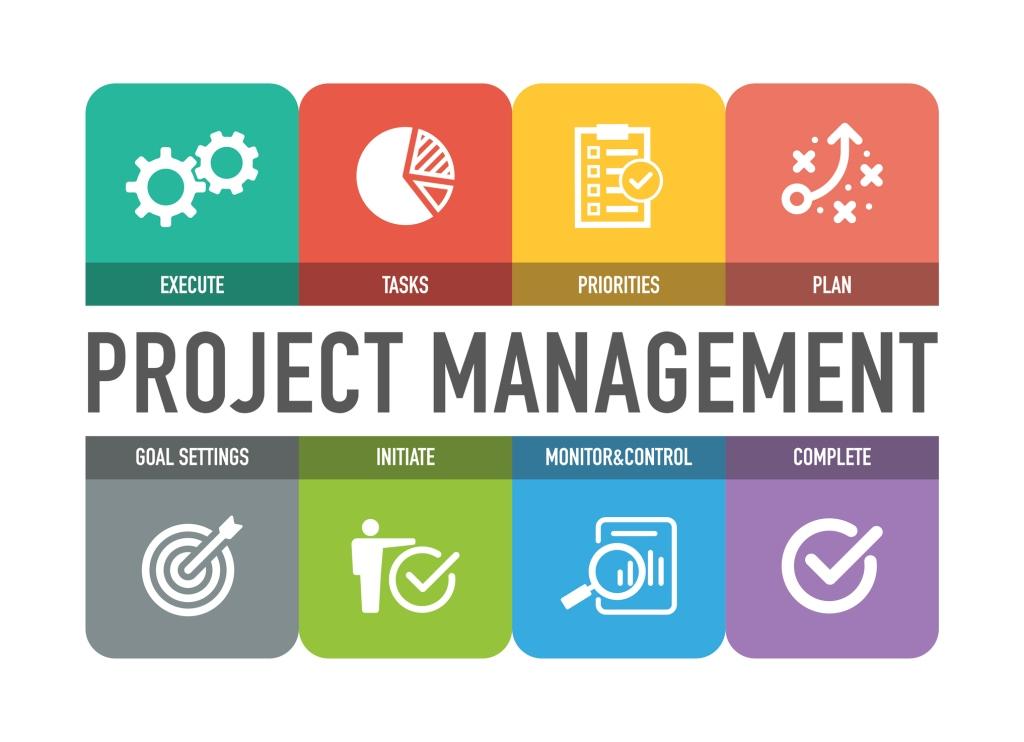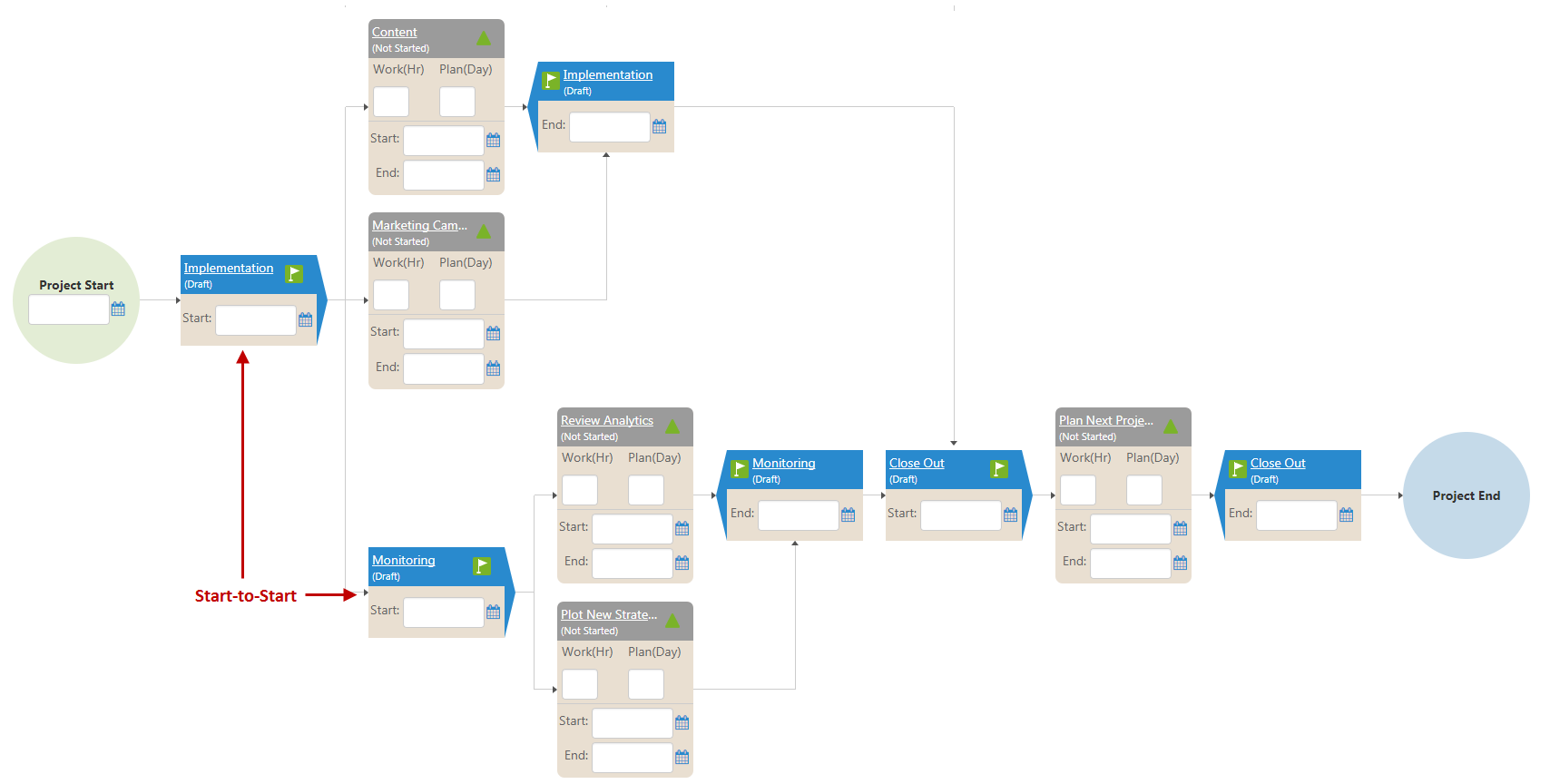This is How Dependencies Make Your Projects Successful
 Project management systems can be a great help in managing ongoing or one-off projects, providing the structure you need to help schedule tasks and project stages. But creating the schedules and making sure tasks flow in a logical manner can be tricky
if you don’t have the capability to add dependencies.
Project management systems can be a great help in managing ongoing or one-off projects, providing the structure you need to help schedule tasks and project stages. But creating the schedules and making sure tasks flow in a logical manner can be tricky
if you don’t have the capability to add dependencies.
Dependencies play an essential role in the function of your project management software. They help team members know when to begin a stage or task within a project since stages and tasks don’t always run in a linear fashion.
Therefore, having the ability to add dependencies and understanding how they work within a project management system helps you make the most effective use of these software packages.
To fully understand how and when to use dependencies, we need to start by identifying stages and tasks.
Stages and Tasks
The best project management software breaks down your projects into component parts to help you manage them more effectively. These parts are comprised of Stages and Tasks.
- Stages are used to define various phases of your project or can be defined in terms of deliverables.
For instance, the first stage of your project may involve creating a case study and feasibility study to determine if your plans are practical and financially worthwhile.
Planning and budgeting for the project may be included in the second stage. The third stage may be the launch or execution of the project.
The fourth stage might include monitoring the progress and establishing control procedures to deal with any overages in time and budget.
The final stage of your project will generally be closing out the project.
- Tasks are the individual components that must be completed during each stage. These will vary widely depending on the type of business and the type of work to be performed.
Tasks are assigned to project team members to complete and can include an estimate of the amount of time and effort it may take to complete the task.
Project team members should be able to record their progress as a task is being worked on, and track and record the time it takes to complete the task.
With these big-picture concepts in mind, recognizing the role of dependencies in these areas makes managing your projects a much easier process.
Dependencies Are Rulesets for Your Project
As you create your project, it is probably clear that some tasks and/or stages must be completed before others can begin. This is where dependencies come into play.
Dependencies are designed to create relationships between different stages and between individual tasks and are essential elements in automatic scheduling for projects of all types.
Dependencies should also come with built-in settings that can be altered if needed to allow more precise scheduling of your stages and tasks.
There are two types of dependencies that can affect your project:
- Finish-to-Start
- Start-to-Start
Let’s talk about how you would use each one.
Finish-to-Start Dependencies
.png) This type of dependency is used to trigger the start of a task or stage after the completion of another task or stage.
This type of dependency is used to trigger the start of a task or stage after the completion of another task or stage.
The principles behind Finish-to-Start dependency relationships are easy to understand. Some tasks must be finished before others can begin. Execution of your project cannot start until planning is finished.
Depending on the type of project you are planning, you may need to implement numerous Finish-to-Start dependencies into your management software.
Examples include:
- Delivering a product may trigger the billing process to the client.
- Completion of structural work could prompt the start of finishing work such as drywall, painting, insulation, and the installation of flooring.
- Finalizing market research is necessary before marketing campaigns can be planned and put into action.
- Identifying leads is required before contact can be made with potential customers and clients.
This is an intuitive relationship that can be readily understood by project managers and workers alike.
By implementing Finish-to-Start dependencies into your project management software system, you can better control the workflows of your project and ensure the most logical progression from the beginning through to the very end.
Start-to-Start Dependencies
 A Start-to-Start dependency is designed to prompt the beginning of one task or stage as soon as another task or stage has started.
A Start-to-Start dependency is designed to prompt the beginning of one task or stage as soon as another task or stage has started.
Start-to-Start relationships are somewhat less intuitive for many of us. These dependencies are designed to allow activities to run concurrently with each other.
A Start-to-Start dependency merely synchronizes the Start Date. Once a Client approves the work, you will need to start designing and writing documentation.
Execution of tasks within a stage cannot begin until that stage begins. Some of the most common examples of Start-to-Start dependencies include the following:
Creating the design of a website can be done at the same time that website content is being written. That way, the content can hopefully be ready to go when the website design is complete and ready to program.
Contacting sales leads can run concurrently with marketing and manufacturing products.Interior finishing of construction projects can and often should be scheduled simultaneously with exterior painting and finishing.
Scheduling tasks to run concurrently saves time and allows you to meet deadlines more effectively. Lead times and lag times may be incorporated into scheduling, allowing for added flexibility when managing the stages and tasks of your project.
Elements Outside Your Control
Not all components of your plan may be completely within your control.
By incorporating time constraints into your dependencies, you can spot problems as they develop and take steps to correct issues with delivery of supplies and completion of tasks by vendors and subcontractors.
This may help you identify unreliable vendors and contractors who could cause cost overruns and failures to meet deadlines.
Why Dependencies Matter
In project management, one of the most commonly used scheduling strategies is known as the critical path method. Simply put, this method analyzes the time needed for each stage and task of a project and provides you with the minimum amount of time needed for completion.
It can also provide you with worst-case scenarios if schedules and plans go awry. For example, if one part of your project is delayed, this can have a domino effect on many other Finish-to-Start dependencies and Start-to-Start dependencies.
Project management software platforms that incorporate and monitor dependencies can provide early warnings about these issues and allow you to devote more resources to ensure on-time completion of your projects.
Putting It All Together
When dependencies work correctly, there is a logical flow from one stage to the next and from one task to the next task. This provides invaluable help to your business by managing your ongoing activities and making sure that projects are completed in the most efficient and practical ways possible.
The relationships created by logical dependencies can be used to propel your project forward and lets you work proactively to resolve any issues before they derail your schedule.
For projects to begin and end successfully, you must be able to manage tasks and stages in practical and effective ways.
Incorporating Start-to-Start and Finish-to-Start dependencies are vital to this. They provide you with oversight and automatic scheduling functionality needed to track all aspects of your projects.
BlueCamroo is designed with an easy-to-use interface that allows you to create dependencies, build in lag time, request a client signoff or send an invoice based on project stage(s) completion as well as upon the end of the project.
Contact BlueCamroo today to discuss your project management system needs.
